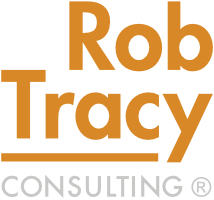Changing your company culture doesn’t have to be complicated.
Sometimes our understanding of company culture can seem ethereal or intangible. I promise you it’s not that complex. Your company’s culture is the grand total of what you get when you add up behaviors that get rewarded and behaviors that get penalized.
Some people believe that you need to first shift attitudes, the way people think about a subject, before you can change their behavior. I disagree. If we want to change culture in our workplaces, we need to start with identifying the behavior that we want to change and work to affect immediate results. And we need to start with company leaders.
For an example, let’s look at a manufacturing facility where safety practices are being ignored. Though required, safety glasses and hearing protection are not being worn. Employees know that these items should be worn, and yet the long-established reality is that management doesn’t really pay much attention to the creation of a safe environment. When on the factory floor, management is not making it a priority to model behaviors like wearing the right safety items.
Every six months or so, someone in upper management gets a bee in their bonnet and rants at the workers to “be safe.” There are some corrective actions written for individuals, but within a few weeks behavior has devolved back to the old habits.
Here’s how I would recommend the company take action. The CEO of the company should go to the head of operations with this message, “I’m watching how we manage our behavior around safety. When I see it happening inconsistently and poorly, it’s not the individuals I’m judging, it’s our company culture. What we see happening is a reflection of our leadership. We get the behaviors we model and tolerate, so our leaders must be tolerating this behavior. What I’m seeing is that safety isn’t important to you, and you’re signaling that to your team.”
When we see repeated behaviors in the workplace that are unsafe or inappropriate, it’s because top leadership tolerates it, and they are not modeling the behaviors they seek. Either implicitly or explicitly, they don’t apply consequences when the bad behavior is observed. Over time, the bad behavior patterns become the company culture. It becomes “This is what we do because this is who we are.”
If we want our company culture to evolve, then we need to focus on the behaviors that should change, and top leadership has to lead by example, clarifying what behaviors are expected, what will be tolerated and what will not.
If the company culture is wrong, then top leadership is modeling, tolerating and rewarding the wrong behaviors.
If you’d like to discuss this further, please reach out to me:
Phone: 651-398-9280
Email: rob@robtracy.net
Contact page: https://www.robtracy.net/contact/
